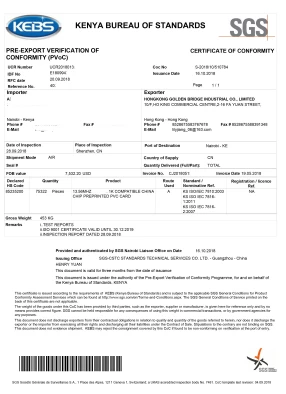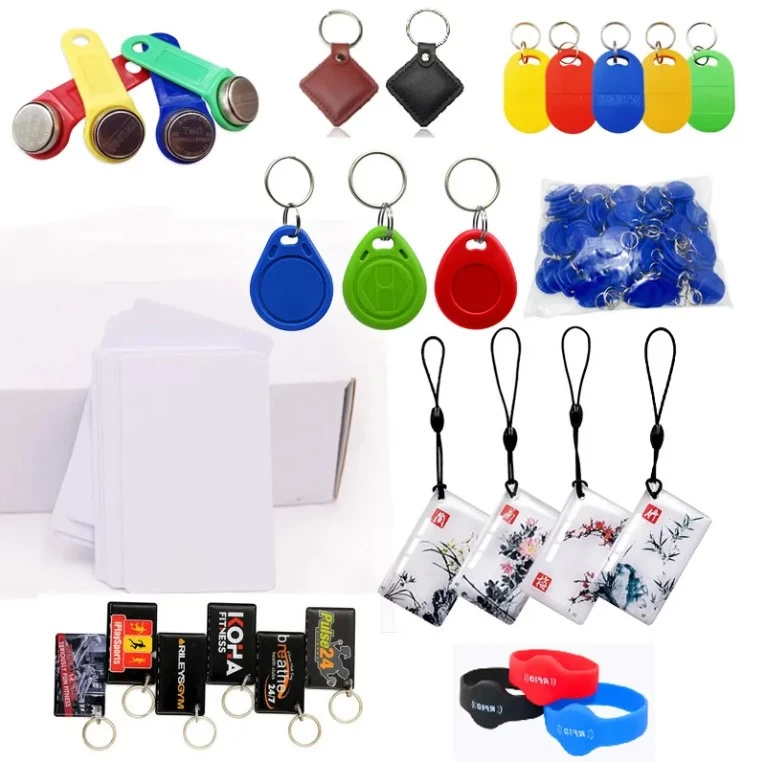Brazil Post Office began to apply RFID technology to postal goods
At present, this postal system has started operation and complies with the global RFID GS1 standard.
In a joint operation with the UPU, the project is being implemented in phases. Odarci Maia Jr., the RFID project manager of the Brazilian Post Office, explained: “This is the first global project that uses UHF RFID technology to track postal goods. The complexity of the implementation involves tracking multiple materials and sizes. In addition, it is necessary to capture a large amount of data in a small time window."

Due to the limitations of the initial conditions, the application of RFID technology is regarded as a prerequisite for maintaining the current operating procedures of loading and unloading and package handling. At the same time, barcodes are also used to track these processes, because the current postal project does not intend to replace the entire park's equipment and infrastructure.
The executives of the Brazilian Post Office believe that as the application of RFID technology advances, some operational procedures that need to be improved will definitely be identified. "The use of RFID technology in the postal environment has just begun. Of course, process changes will also be observed in the learning curve."
Maya stated that the purpose of choosing low-cost RFID tags together with the UPU is to minimize the impact on the value of postal services. "The order content delivered by the post office is extensive, and most of them are of low value. Therefore, it is unreasonable to use active tags. On the other hand, it is necessary to adopt the most commonly used standards on the market that can bring better benefits, such as the cost of the load type. The relationship between reading performance and reading performance. In addition, the use of standards allows rapid adoption of the technology because there are many such solution providers on the market. More importantly, the use of market standards such as GS1 allows customers to participate in the postal ecosystem Gains from other processes."
Readers installed at entry and exit gates
In this project, the reader was installed at the cargo entry and exit gates of the main operating units of the Brazilian Post Office. These units include sorting centers, freight stations, distribution centers, international centers, etc. At the Brazilian Post Office, packages in cargo containers are transported in a uniform manner, and the container can hold hundreds of packages, depending on the size and weight of a single package.
Each order has its own RFID tag, and the loading unit also has a permanent RFID tag with a GS1 GRAI-96 identifier. Under normal circumstances, when a container is loaded and unloaded in the trunk of a large truck, a reader installed on the dock will count the contents of the container and transmit the information to the company's central repository. The package transportation information is reflected in the target tracking system consulted by the customer.
The RFID reader here was selected by an international tender conducted by the UPU. The reader kit consists of an Impinj reader, Keonn antenna and an on-board micro PC, integrated by Kyubi. "The project includes 2009 reader kits of various configurations, of which about half have been installed in about 50 operating units." Maya said.
According to Maya, this project faces many challenges, such as determining the installation location of each RFID reader kit, preparing infrastructure, designing and developing databases, applications, and integration with enterprise systems, training related teams, and producing internal and Technical materials used externally, etc. In addition, a more important challenge is to track the complexity of postal cargo in all aspects, and to meet the needs of capturing large amounts of data in a small time window.
In the next 18 months, the Brazilian Post Office team will install readers in approximately 180 operating units and consolidate the use of technology by postal customers.
Inlay performance standards for logistics
The project manager of the Brazilian Post Office, Alberto de Mello Mattos, said that the purpose of the project is to allow customers to purchase and produce labels for their orders. Customers who have already adopted RFID technology will not restrict their use of specific Brands or models of inlays, and give them a wide range of freedom of choice. "In view of the fact that there is no inlay performance technical standard for logistics or postal processes, the post office has also conducted several on-site tests, involving various types of goods to be processed in the office every day, thereby determining the performance benchmark of inlay." This is the name. It is the inlay of Smartrac Dogbone Monza R6.
In order to guide customers to use inlays that can provide sufficient read rates, the post office also published an inlay list called RPC, whose performance is equal to or better than the reference inlay.
Matos believes that at this time, RFID technology will be able to improve the display information of customers in terms of order location, which can provide the exact time when the package enters or leaves a certain operation center, as well as the movement process of the monitored object from its origin to the final recipient. Information about new events in.
The post office has its own tracking and tracing process (positioning and tracking of orders) system, called SRO (Target Tracking System), which was developed for the use of bar code technology, through manual reading or tracking in automatic sorting equipment The label (Sedex label) attached to the order.
"The RFID system has established its own database, keeping in mind the details of reading frequency and identifiers used." Matos reports, "This information is continuously transmitted to SRO and provided to customers through digital channels. In addition, we are also working hard. Integrate the branch network with the transportation system used by our customers."
The database of this solution is concentrated in Brasilia, the capital of Brazil, and some information will also be sent to the UPU cloud in Switzerland.
Main identifier of postal goods
A simple way to understand the post office project is to start with the label of the package or order.
At present, each package will receive a barcode tracking label engraved with the UPU standardized identifier, called S10, in the format of two letters, nine numbers, and ending with two other letters, for example: ML123456789BR. This is the main identifier of the package, used for contractual purposes and for customers to research in the tracking system of the Brazilian Post Office.
This information is captured in the entire postal process by manually or automatically reading the corresponding barcode. The S10 identifier is not only provided by the Brazilian Post Office to contract customers who produce personalized labels, but also generated on Sedex labels, for example, posted on individual customer orders for branch counter services.
"With the adoption of RFID, the S10 identifier will be kept in parallel with the identifier recorded on the inlay. For packages and sachets, this is the identifier in the GS1 SSCC (Serial Shipping Container Code) standard." Maya explained. "In this way, each package contains two identifiers. With this system, they can identify each batch of goods circulating through the post office in different ways, whether it is tracked by barcode or RFID."
For customers serving at the post office, the attendant will affix RFID tags and link specific packages to their SSCC and S10 identifiers through the service window system.
For contract customers who request the S10 identifier through the network to prepare for shipment, they will be able to purchase their own RFID tags, customize them according to their personal needs, and produce RFID tags with their own SSCC codes. In other words, with its own CompanyPrefix, in addition to interoperability when a package circulates through multiple service providers, it also allows integration and use in its internal processes.
Another option is to link the SGTIN identifier of the product with the RFID tag to the S10 asset to identify the package. In view of the recent launch of the project, its benefits are still being monitored.
The middleware currently used in this project is developed by Kyubi. Its main purpose is to filter read events, minimize sending duplicate information to a central repository, manage captured data, and send information to support equipment maintenance. In addition, Redbite is developing a new middleware, which is expected to use cloud architecture (AWS IoT) for health monitoring (maintenance), parameterization and embedded software updates.
Since the Brazilian Post Office has no direct relationship with the RFID hardware supplier, all negotiations at this level are carried out by the UPU agency responsible for designating and signing the equipment contract.
The applications, databases, and interfaces with the company's systems are all developed in-house. The transformation process of energy infrastructure and data communication at each installation site is also developed using its own resources and specific contracts.
"The implementation of RFID technology in a company of the size of Brazil’s Post Office has a wide geographic coverage, handles the diversity and a large number of goods, and the construction standards of buildings are different. In addition, it also involves the most diverse This project is unique and promising.” Maya proved this. "The challenge is divided into five pillars-infrastructure, readers, systems, tags and signs-to better organize project implementation."


























